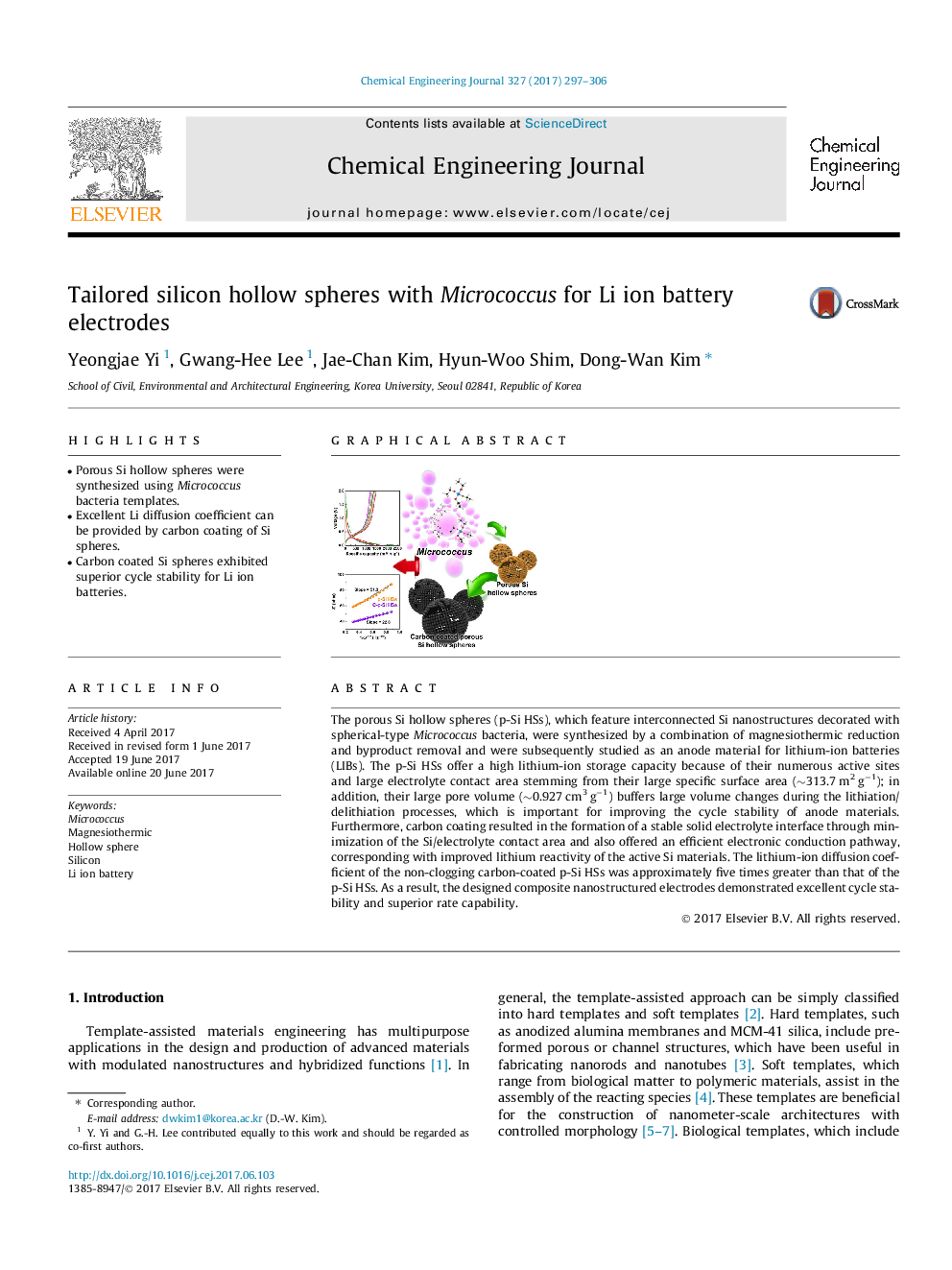| Article ID | Journal | Published Year | Pages | File Type |
|---|---|---|---|---|
| 6465181 | Chemical Engineering Journal | 2017 | 10 Pages |
â¢Porous Si hollow spheres were synthesized using Micrococcus bacteria templates.â¢Excellent Li diffusion coefficient can be provided by carbon coating of Si spheres.â¢Carbon coated Si spheres exhibited superior cycle stability for Li ion batteries.
The porous Si hollow spheres (p-Si HSs), which feature interconnected Si nanostructures decorated with spherical-type Micrococcus bacteria, were synthesized by a combination of magnesiothermic reduction and byproduct removal and were subsequently studied as an anode material for lithium-ion batteries (LIBs). The p-Si HSs offer a high lithium-ion storage capacity because of their numerous active sites and large electrolyte contact area stemming from their large specific surface area (â¼313.7Â m2Â gâ1); in addition, their large pore volume (â¼0.927Â cm3Â gâ1) buffers large volume changes during the lithiation/delithiation processes, which is important for improving the cycle stability of anode materials. Furthermore, carbon coating resulted in the formation of a stable solid electrolyte interface through minimization of the Si/electrolyte contact area and also offered an efficient electronic conduction pathway, corresponding with improved lithium reactivity of the active Si materials. The lithium-ion diffusion coefficient of the non-clogging carbon-coated p-Si HSs was approximately five times greater than that of the p-Si HSs. As a result, the designed composite nanostructured electrodes demonstrated excellent cycle stability and superior rate capability.
Graphical abstractDownload high-res image (83KB)Download full-size image
